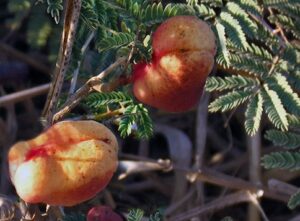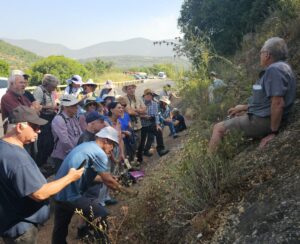The state of nature in Israel in 2016 – the botanical perspective
Gadi Pollak, Kalanit editorial board. gadpollak@gmail.com
Keywords: biological indicators, planted forest, management, monitoring, ecological succession, vegetation, woody vegetation, flora, open areas
The report on the state of nature in Israel for 2016, produced by the National Nature Assessment Program, presents an update of the state of the nature on the basis of a monitoring program that defines questions, threats and processes, and uses biological indicators to evaluate the state of nature on a national level, and in eco-geographic monitoring regions. The central botanical indicators that served the evaluation were the cover and composition of the woody vegetation, whose trends are supposed to be checked through monitoring over time. The current review examines the extent to which the findings of the report actually provide a comprehensive picture of the up-to-date state of the vegetation and flora in Israel, as a basis for management and for the interfacing of the open spaces.
Summary of the Kalanit study tour in Samaria on March 30, 2017
Avi Shmida, the Department of Evolution, Systematics and Behavior, the Federmann Center for the Study of Rationality at the Hebrew University in Jerusalem, Givat Ram, and the Land of Israel Studies at the Kinneret College. avi.shmida@gmail.com
Gadi Pollak – Kalanit editorial board. gadpollak@gmail.com
Keywords: Quercus boissieri, Iberis odorata, Rhus tripartita, vegetation belts in the Mediterranean mountainous regions, Kana Wadi. transition belt, spring flowering, field vegetation, Rosh HaAyin, Samaria, open Mediterranean shrubland
In the course of the study tour we learnt about the unique characteristics of the vegetation and flora in the elevated belts of the Mediterranean mountainous region of the Samarian mountains; the Rhus tripartita shrubland in the colline belt; slopes with evergreen Mediterranean chaparral in central Israel, Samaria and the Kana wadi; the remnants of the Quercus boissieri shrubland in the Se'orim Valley, Batha in the higher elevation belt tothe east of the Shilo ridge, which contains remnants of shrubland with the influence of higher transition belt vegetation. Special attention was paid to several field plants typical of cultivated areas in Samaria, and the transition belt vegetation of eastern Samaria was observed.
Summary of the Kalanit study tour in the Upper Galilee on April 20, 2017
Avi Shmida, the Department of Evolution, Systematics and Behavior, the Federmann Center for the Study of Rationality at the Hebrew University in Jerusalem, Givat Ram, and the Land of Israel Studies at the Kinneret College. avi.shmida@gmail.com
Mimi Ron, Deshe Institute. and the Kalanit circle. mimiron47@gmail.com
Gadi Pollak – Kalanit editorial board. gadpollak@gmail.com
Keywords: Eocene, Iris lortetii, royal Irises, Pistacia atlantica, Quercus calliprinos, hybrids among Orchids, Geranium libani, eastern Galilee, Mt. Avivim, Mt. Adir, Quercus boissieri and Quercus calliprinos chaparral, Quercus boissieri forest, open forest, Orchis italica, Ein Lilith, antipastoral plants, Rosularia libanotica, Amygdalus korschinskii
The study tour took during the peak of the flowering in the eastern Upper Galilee heights, and the slopes were still green. On the slopes of Mt. Adir the Aleppo Oak (Quercus boissieri) forest is dominant, which characterizes the higher altitude belt in the Mediterranean region. A mixed chaparral of the Kermes Oak (Quercus calliprinos) and the Aleppo Oak grows in the Dovev wadi. On the slopes of Eocene lime rocks in the Avivim-Malkia area an open transition belt forest of the Atlantic Pishtacio (Pistacia atlantica) and the Wild Almond (Amygdalus korschinskii) is developing along the lower altitude, which is replaced at a higher altitude by an open forest of the Kermes Oak and the Palestine Pistachio (Pistacia palaestina). In the Malkia-Tel Kadesh areas there are concentrations of Lortet's Iris (Iris lortetii) and on the cliffs of the Avivim wadi grows the Lebanon Navelwort (Rosularia libanotica). Special finds were the Lebanese Cranebill (Geranium libani), several Orchid hybrids and the Perforate St. John's Wort (Hypericum perforatum).











